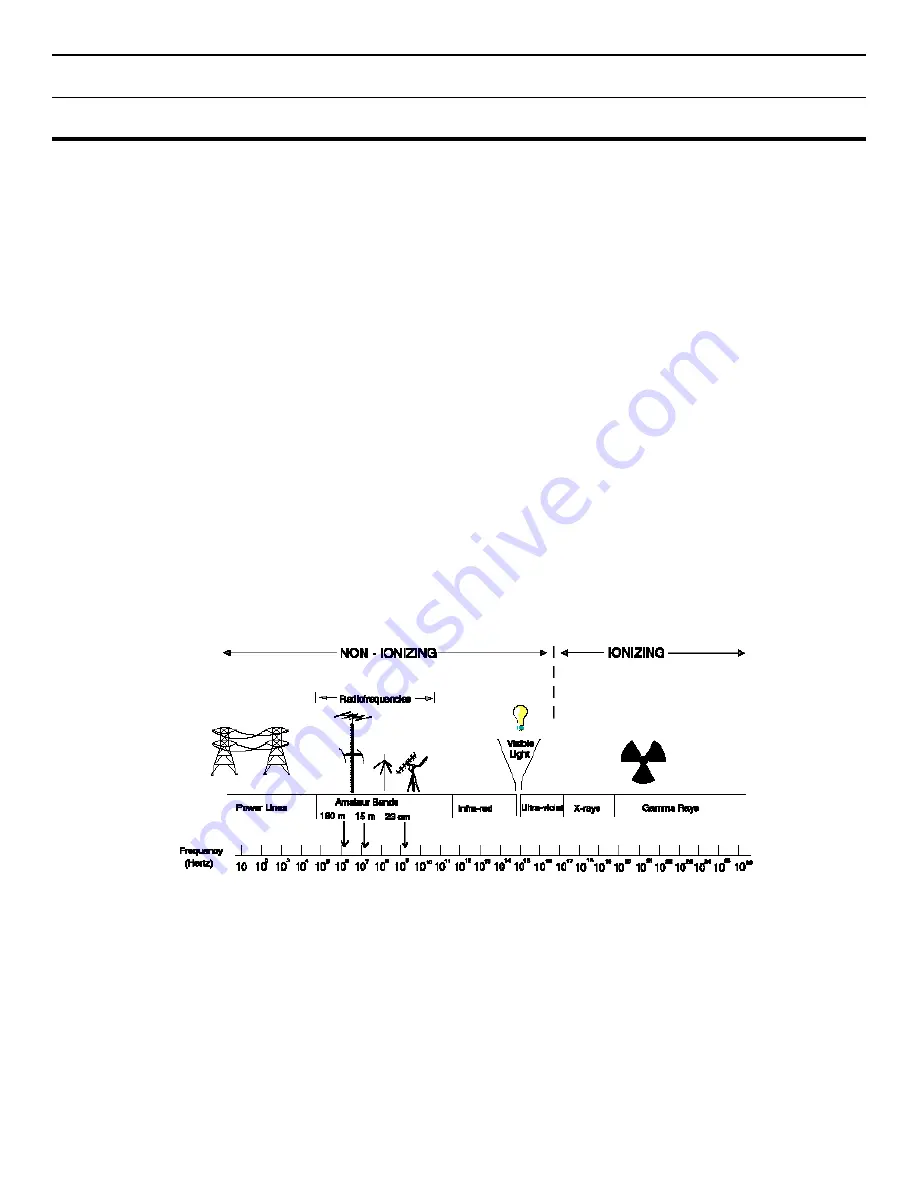
MFJ-9234 Mini Loop Tuner
Instruction & Technical Manual
- 6 -
RF HAZARD PRECAUTIONS
An electromagnetic wave is characterized by its wavelength and frequency. The wavelength is the
distance covered by one complete wave cycle. The frequency is the number of waves passing a
point in a second. For example, a typical radio wave transmitted by a 2-meter VHF station has a
wavelength of about 2 meters and a frequency of about 145 million cycles per second (145 million
Hertz): one cycle/second = one Hertz, abbreviated Hz.
Electromagnetic waves travel through space at the speed of light. Wavelength and frequency are
inversely related by a simple equation: (frequency) times (wavelength) = the speed of light. Since the
speed of light is a constant quantity, High Frequency (HF) electromagnetic waves have short
wavelengths, and Low-Frequency (LF) waves have long wavelengths. Frequency bands used for
amateur radio transmissions are usually characterized by their approximate corresponding
wavelengths, e.g., 12, 15, 17, 20 meters, etc.
The electromagnetic "spectrum" includes all of the various forms of electromagnetic energy ranging
from extremely low frequency (ELF) energy (with very long wavelengths) to all the way up to X-rays
and gamma rays, which have very high frequencies and correspondingly short wavelengths. In
between these extremes lie radio waves, microwaves, infrared radiation, visible light and ultraviolet
radiation, respectively. The RF part of the electromagnetic spectrum can generally be defined as that
part of the spectrum where electromagnetic waves have frequencies that range from about 3 kilohertz
(kHz) to 300 gigahertz (GHz). Figure 2 illustrates the electromagnetic spectrum.
Figure 2: The Electromagnetic Spectrum
















